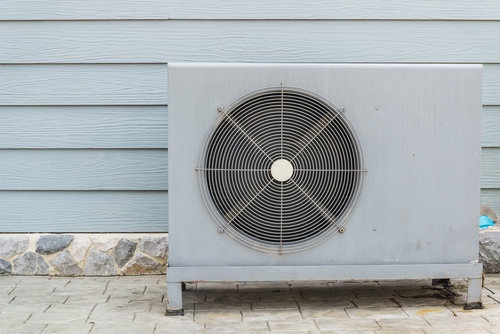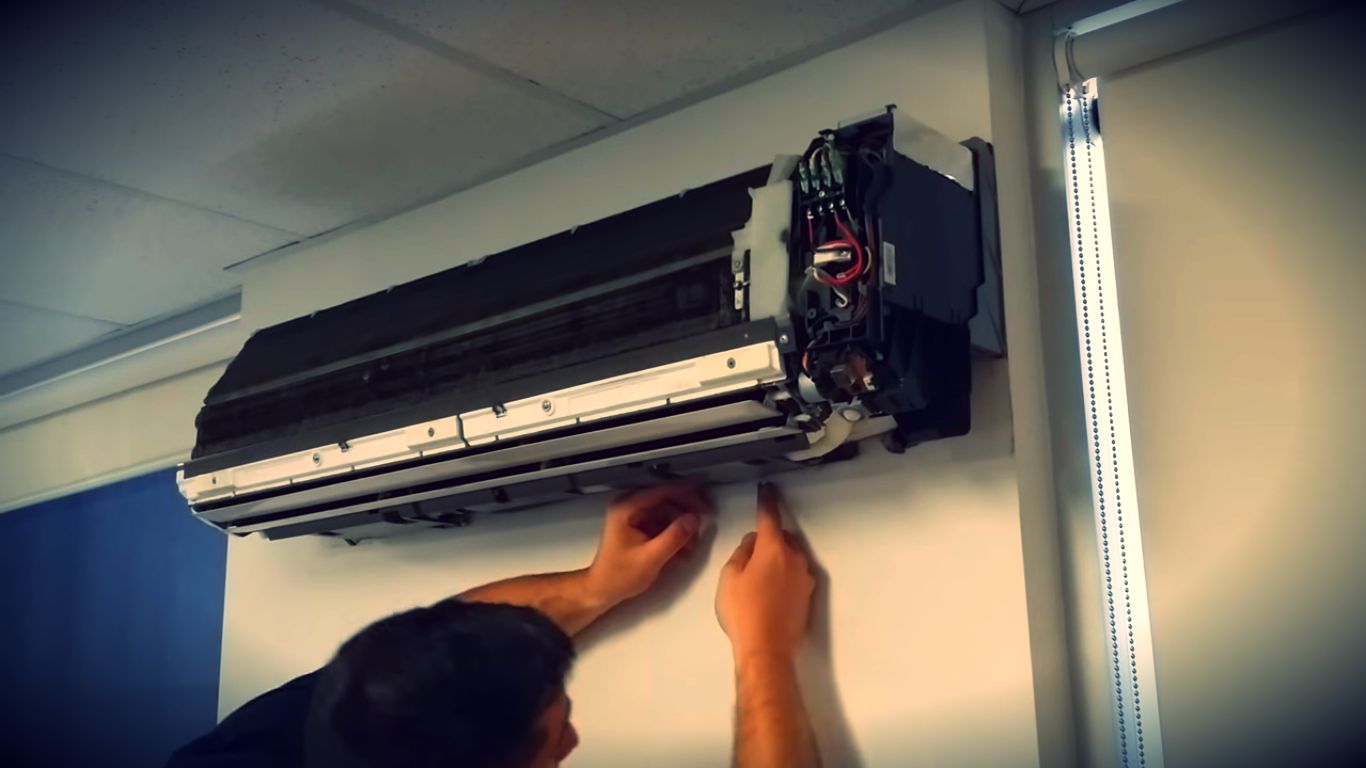The summer is here, and the temperature is beginning to rise. Whether you are a new buyer or looking for a replacement for your old air conditioner, you would need to shortlist some air conditioners because the variety available in the market is overwhelming. To add to that, air conditioner specifications appear no less than an engineering document and are often hard to understand.
In the following sections, we discuss the specifications, their implications, and how you should use those to make an informed purchase decision.
Specifications
1. Cooling Capacity
Manufacturers use various ways to report the cooling capacity of an air conditioner. The most commonly used terms are Ton (often referred to as tonnage), BTU/hour, or Watts (of cooling power).
Tonnage
The tonnage of an air conditioner is not related to its weight. Tonnage indicates the cooling capacity of the aircon. 1 A ton of air conditioning is the cooling effect provided by one short-ton (907 kg) of ice melting over 24 hours. This form of measurement came from the past when there were no aircons and ice was used for cooling.
BTU per hour
BTU stands for British Thermal Unit (equivalent to 1055 joules of heat). BTU per hour reflects how much heat the aircon can pump out per hour.
Watts
Watt is a unit of power and indicates how much heat the aircon can pump out in one second.
Equivalence
An aircon’s capacity can be measured using these three units. Following is the equivalence
1 Ton of air conditioning = 12,000 BTU per hour = 3516 Watts
Once you know this equivalence, determining the cooling capacity from the specifications sheet should be a breeze. Basic math follows from here. Multiply or divide these numbers to get the cooling capacity you want.
Note: Cooling power (in watts) is different from the power consumption of the air conditioner, which is also measured in watts.
Minimal, Maximum, and Nominal Capacity
Non-inverter air conditioners cool at a fixed rate and would not have a minimum or maximum number. The nominal capacity indicates the designed cooling capacity under normal operating conditions.
Inverter air conditioners can cool at varying rates depending on requirements and settings. This is possible because inverter ACs have compressors whose speed can be changed during operation. For inverter ACs, nominal cooling capacity is the designed capacity, while the minimal and maximum are the slowest and faster cooling rates, respectively.
Consider the following table for an inverter air conditioner:
Data Reference: https://www.daikin.be/content/dam/document-library/catalogues/ac/split/ctxs-k/Residential%20catalogue_ECPEN14-017_Catalogues_English.pdf
| Capacity Unit | Minimum Capacity | Nominal Capacity | Maximum Capacity |
| Watts | 600 W | 2500 W | 3900 W |
| Tons | 0.17 Tons | 0.71 Tons | 1.10 Tons |
| BTU per hour | 2040 BTU/hr | 8520 BTU/hr | 13200 BTU/hr |
This indicates that the air conditioner nominally rated as 0.71 tons can go as low as 0.17 tons and as high as 1.10 tons.
Inverter ACs can, for some time, operate faster than their designed capacity. This is of immense use when you’ve just entered your house and need immediate relief from the heat.
2. Power Input / Power Consumption
Air Conditioners consume a lot of power. It is essential to understand how much power the unit consumes. It is required not only for the calculation of energy bills but also for sizing the power equipment like wiring, sockets, switches, circuit breaker capacity, and stabilizer capacity.

Power consumption is measured in watts (W) and is different from the cooling capacity. It is a single value for a non-inverter AC, whereas, for inverter aircons, it has three values – minimum, nominal, and maximum.
| Power | Minimum Capacity | Nominal Capacity | Maximum Capacity |
| Power Consumption | 110 W | 410 W | 880 W |
| Cooling Power | 600 W | 2500 W | 3900 W |
Power consumption is directly related to the operating voltage (V) and current drawn (Amp/A). The power consumption is the product of operating voltage and current drawn.
3. Voltage / Current / Phase / Frequency (V / A / Ǿ/ f)
Voltage (V) for small residential aircons is the standard voltage at the plug (110 V for the U.S., 220 V for India, and so on).
Current (A) depends on the nominal capacity of the air conditioner and may vary as per the cooling speed in case of inverter aircons.
Phase (Ǿ) indicates the number of wires (phases) that an aircon requires for operation. Small residential aircons are typically single phase. Larger aircons (like central air conditioning) may require a three-phase power supply.
Frequency (f) is the alternating current frequency provided by the grid. It is usually 50 Hz or 60 Hz, depending on location.
Example values:
Read the following table to understand the example
| S.No | AC Description | Voltage | Current | Phase | Frequency |
| 1 | Residential 2.0 Ton Inverter Split AC (U.S.A) | 110 V | 17 A | Single | 60 Hz |
| 2 | Residential 2.0 Ton Inverter Split AC (India) | 220 V | 8.5 A | Single | 50 Hz |
Voltage depends on the country except for very high capacity aircons that may require 415 V and a 3-phase power supply. For residential aircons, these may be rare.
Current depends on the nominal capacity and the speed at which the AC is running.
Most residential air conditioners are single-phase and regardless of any factor, all aircons operate on the frequency provided by the grid.
4. Energy Efficiency Ratio
The amount of cooling provided by the aircon per unit of energy consumed reflects the efficiency of the system. The EER is the cooling power divided by the power consumption of the unit. EER is defined at a standard humidity level. Higher EER reflects a more efficient aircon. Consider the EER and the additional cost of the aircon while making a purchase decision.
The energy efficiency ratio is also expressed as Seasonal Energy Efficiency Ratio (SEER), which is an averaged energy consumption indicator based on annual power consumption.
5. Coefficient of Performance (COP)
The EER is measured and reported at a standard humidity and temperature level. The EER defines the efficiency of the aircon under standard test conditions. Real-world efficiency depends on a lot of factors. The coefficient of performance is a measure of the real-world efficiency of the system.
The formula to calculate COP remains the same i.e.
The cooling power of the air conditioner / Power consumed by the air conditioner
6. Dimensions and weight
This one is straightforward to understand but requires careful planning. The dimensions of the aircon may prevent you from installing it where you had wanted. In the case of window AC, noting the dimensions is critical. After the fitment of the aircon at the window, any excess space must be sealed off else the aircon shall lose effectiveness because of air leak.
For a split air conditioner, there are two or more units. The spec sheet would separately mention the length, breadth, height, and weight of the units.
7. Noise level
Split air conditioners meant for residential use are ductless and have an indoor and outdoor unit connected through the refrigerant pipes. For such ACs, two noise levels are specified – one for each unit.
Noise level is measured in dBA, and lower is the value, quieter would be the air conditioner. If you plan to install the aircon in your study room, you might want to pay attention to this number.

Higher capacity aircons typically have a higher noise level due to a bigger fan and compressor size. Refer here for the difference between split air conditioner and window AC
8. Airflow rate
The airflow rate indicates the volume of air circulated by the indoor unit. It is measured in cfm (cubic feet per minute) or m3/min (cubic meter per minute). Higher airflow means the cold air would spread faster. In addition to that, higher airflow means that a draft of air would be felt in the surroundings.
The specification sheet would mention the airflow rates at different fan speeds. When the fan speed is reduced, airflow and noise level drop.
9. Refrigerant
The air conditioner works essentially like a refrigerator. It uses specific gases, which are also called refrigerants. This refrigerant is compressed inside the condenser and circulated across the indoor unit through the piping system. It carries the heat from the room to be vented outside. There are various kinds of refrigerants and depending on the model; it may vary.
The most common gases used as refrigerants are R-22, R-32, and R-410A. These gases vary in their “Ozone Depletion Potential,” so manufacturers typically use greener gases in more expensive units.
As far as you are concerned, you should just take note of which gas your unit needs. If it needs top-up or refill, you’d know which one to get.
Refrigerant charge (pressure): Depending on the air conditioner, the gas type, and capacity, there needs to be a specific amount of gas that needs to be filled. This is typically information meant for the service sheet rather than the retail specification sheet. However, if you come across this, you should know that it is reported as the pressure required in the system. It is measured in PSI (pounds per square inch). You want to know how often gas topup needed for your aircon?
10. Piping specifications
This is typically meant for the installers; however, it is good to learn about it.
The pipe diameter is specific to the AC model and is mentioned in millimeters (mm).
The height difference between the condenser (outdoor unit) and the evaporator (indoor unit) should not exceed the specified height else the air conditioner would fail to function correctly.
There is also a maximum limit on the length of the refrigerant pipe between the two units.
Plan your mounting locations such that these numbers are adhered to. The piping length and unit height difference are critical to the proper functioning of the aircon. Too long of a pipe will result in cooling losses, and your air conditioner need to work harder. Get a professional installer to estimate these accurately to ensure less cooling losses for your home. If not sure follow our guide in getting a reliable aircon service provider in Singapore
11. Operating temperature range
An air conditioner removes heat by raising the temperature of the condenser’s coil through gas compression and then venting off the heat to the atmosphere. However, there is an upper limit over which the aircon would not function properly due to the inadequate exchange of heat. The same goes for lower temperatures. If the temperatures go below the freezing point, the coils may get a buildup of ice. The operating temperature range should be taken care of while purchasing the AC. You should buy an aircon as per your location’s climate. Want to know more about the air conditioner coils and how they work?
If you are in Singapore, then you can hire experts from the MCL Aircon, reliable aircon servicing Singapore company. Yes, the company provides legitimate packages on aircon servicing/ installation/ repairing/ replacing and much more! Please read here on our top 5 reliable and best aircon service providers list in Singapore and also our top choice. We are open 24 hrs a day at your aircon service.


:max_bytes(150000):strip_icc()/labgrownlede-2b7540f7f7404558a08f1a555862f3d3.jpg)










